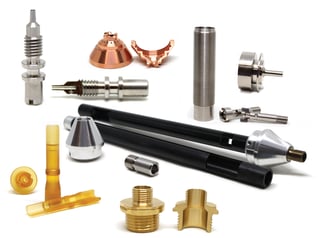
SCM, LTA, TCO, YoY cost down... The list of acronyms and fancy labels is as long as the imagination of creative strategic sourcing gurus these days. The challenge, for us manufacturers, is how not just to survive but thrive in this complex ecosystem and demonstrate value over the long run.
Let's use the now common "Long Term Agreement" (LTA) structure with a "Year over Year" (YoY) productivity guarantees: In effect, we're asked to not only hold our prices, but also to demonstrate that our services are able to add further value down the supply chain and reduce total costs year over year.
Here's a strategic choice we all have to make at some point: Refuse to sign up and let the opportunity pass or sign up and manage risks. If we sign up and don't change anything, margins will eventually erode and long term viability will not look favorable.
There is a way forward that mitigates these risks. Peter Drucker, widely considered the Father of Management Consulting, famously said, “If you can’t measure it, you can’t improve it.”
Taking those words to heart, and head, we’ve been using a pair of interfacing software packages – Datanomix and Excellerant -- that help us remain valuable to our customers by allowing us to monitor and react in real time, all the time. C&M has been on the forefront with both of these partners to help develop their product so it fits the needs of our industry.
Before integrating these solutions with our operations, we conducted extensive research. Specifically, we participated in webinars, as well as in online and in-person demos, and then tested various software packages to determine the best fit for our specific requirements before determining a “winner.” It was a team effort as opposed to an individual or a small group demanding that we use a specific solution to improve our operating efficiency.
We began using Excellerant about 2 years ago to measure shop floor productivity and uploaded a new version about six months ago. By being connected to sensors in our machines, Excellerant measures cycle time, uptime and “first good part” of a production cycle or shift. When our production team saw the data on Day 1, they adjusted and saw improvement on Day 2. Simply put, the information that Excellerant provides is critical to keeping the spindles turning.
Datanomix has been in our shop for almost a year. It keeps track of production on each machine and calculates how each machine is running relative to the programmed cycle and previous run history. If a machine is not performing up to capacity, the software tells us where we should be deploying our very valuable Manufacturing Engineering resources.
By getting real-time information from Datanomix and Excellerant, we understand what’s happening on the shop floor and how we can improve overall equipment effectiveness (OEE) based on the data we receive. Having access to the quality and quantity of information we do is allowing us to take advantage of the industrial internet of things – IIoT – in ways that benefit our customers by allowing us to increase our use of automation and maximize our operating efficiencies.
For years, manufacturers have talked about using computer technology to transform their operations, but only now is that vision becoming a reality. These advances are due largely to the increased ability of computers to capture and synthesize data in a usable manner.
In our case, Excellerant eliminates the need to manually upload production data at the end of the day, as we had to do previously. Instead, this piece of software enters data in real time so our production team can focus on higher-level matters that are more challenging and fun and have a direct effect on meeting our customers’ specifications.
Lessons Learned
 By using Datanomix and Excellerant, we’ve learned that, when given easily understandable information in real time, our production teams can make proactive decisions to optimize productivity and quality, as well as increase on-time delivery and reduce production costs. Mostly, those improvements take the form of more up-time and less scrap.
By using Datanomix and Excellerant, we’ve learned that, when given easily understandable information in real time, our production teams can make proactive decisions to optimize productivity and quality, as well as increase on-time delivery and reduce production costs. Mostly, those improvements take the form of more up-time and less scrap.
Through increased digitization of our manufacturing processes, I foresee more opportunities than ever to strengthen our position as a valuable resource for our customers. By making significant investments in productivity improvement technologies, we’ve been able to strengthen relationships with established customers, as well as attract new customers who are looking for improved quality and turnaround time, often because of bad experiences elsewhere.
Although the software solutions we’re using will someday be standard among manufacturers of precision parts for mission critical applications, our culture of innovation has allowed us to be early adopters of numerous technologies that have helped help our customers remain competitive in an increasingly dynamic business environment.
In summary, we saw the emergence of long term agreements (LTA) with cost down requirement coming our way and we decided to accept the challenge head on with creativity, agility and lots of hard work from our team and out partners. We're ready for any challenge!
How has productivity improvement software benefited your company’s operations?
